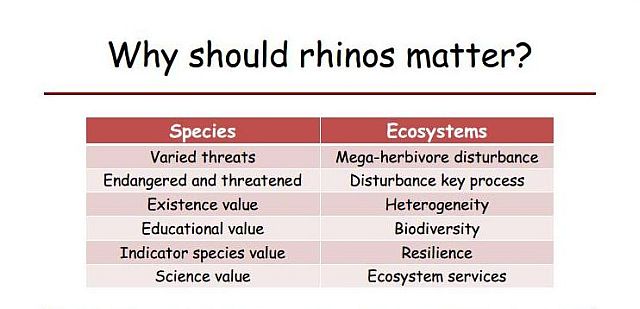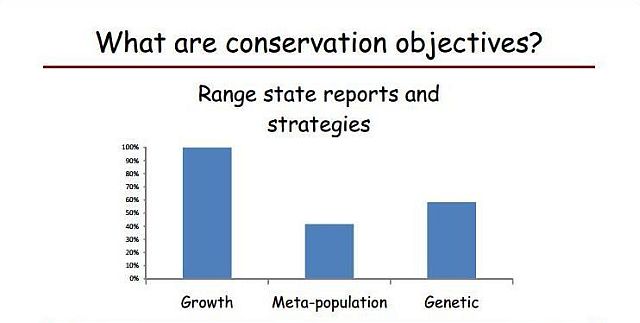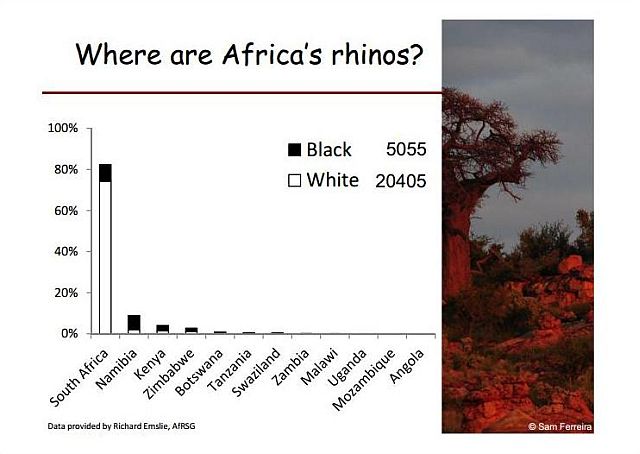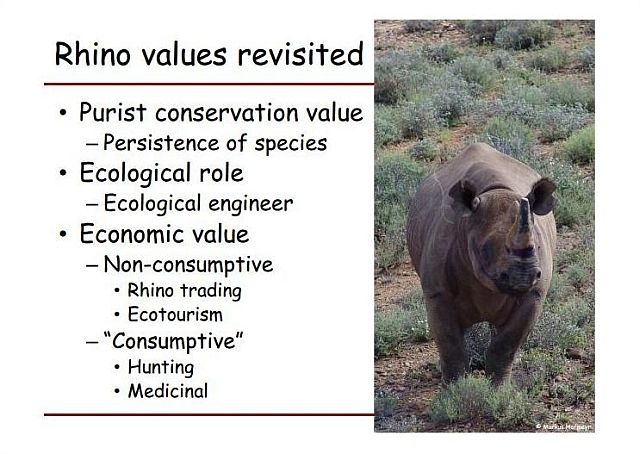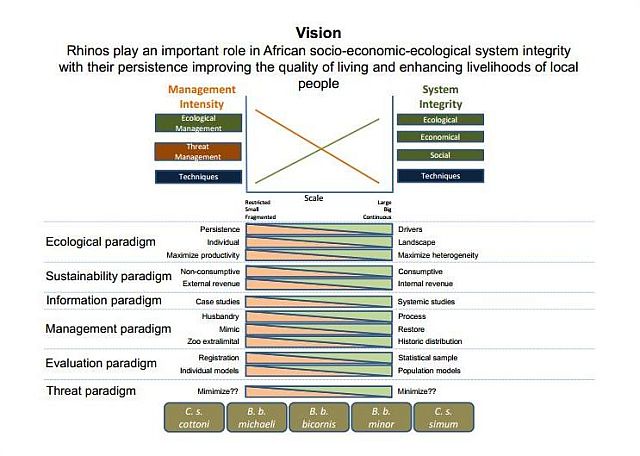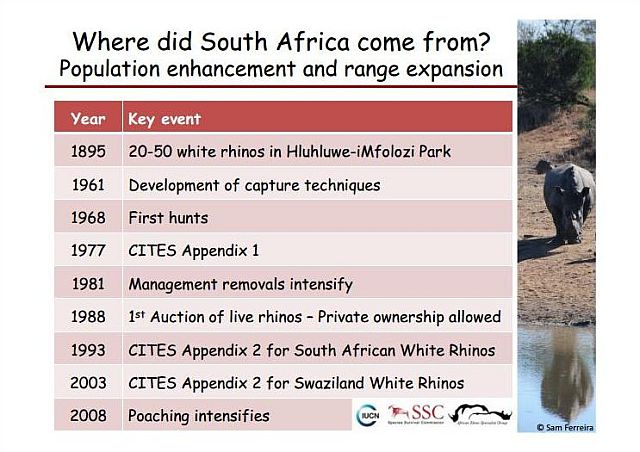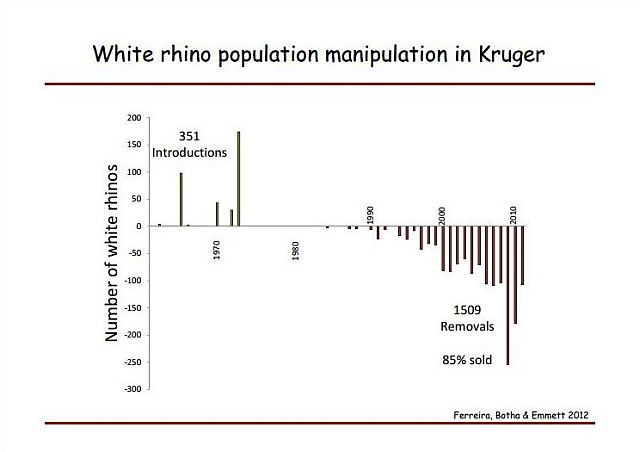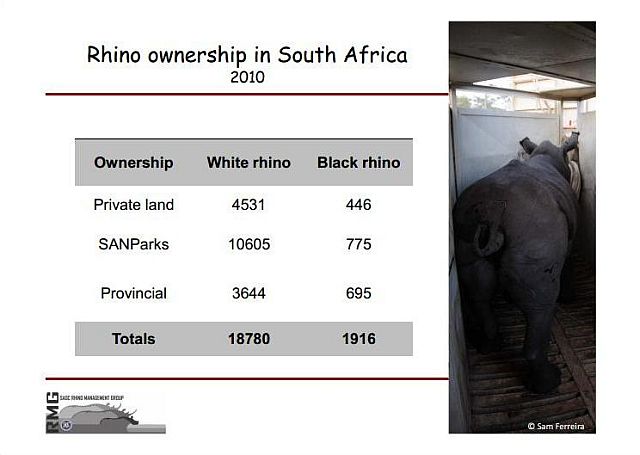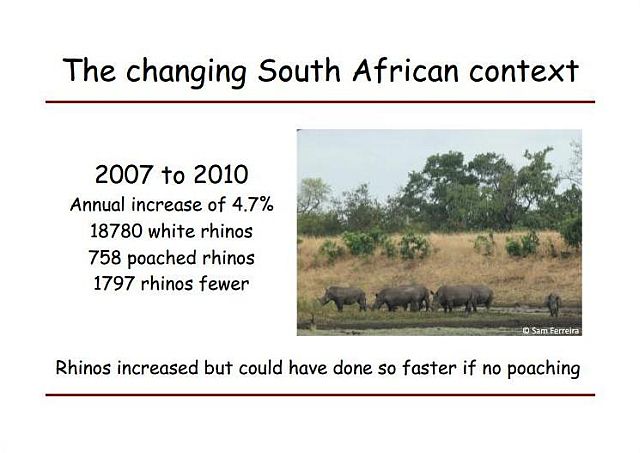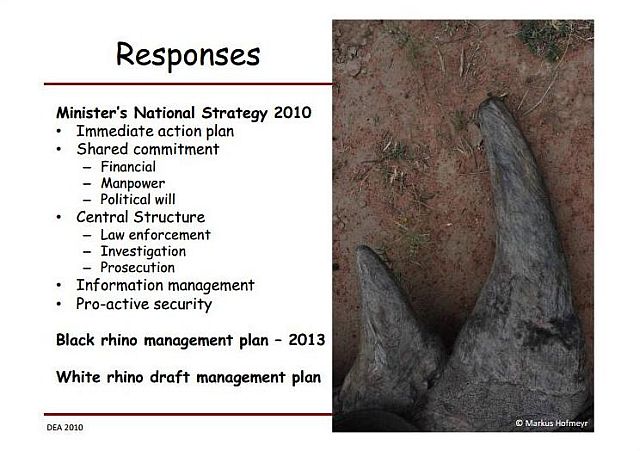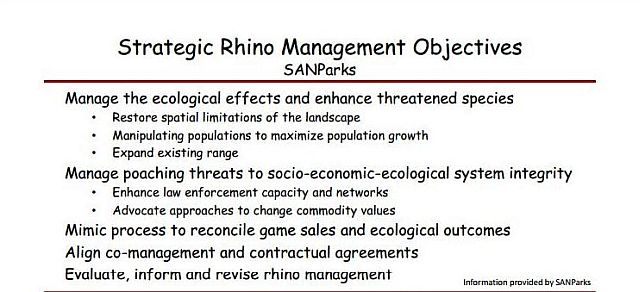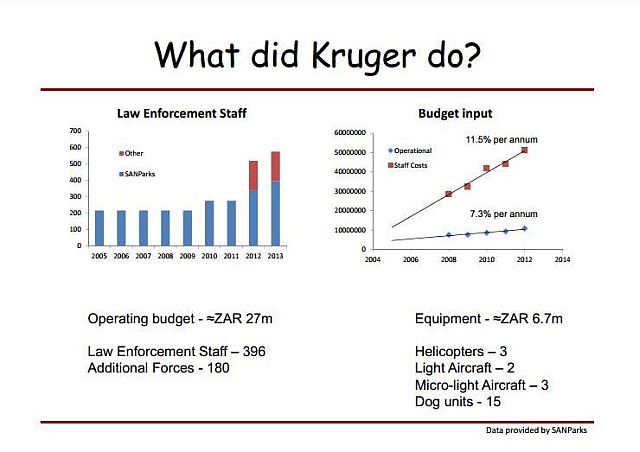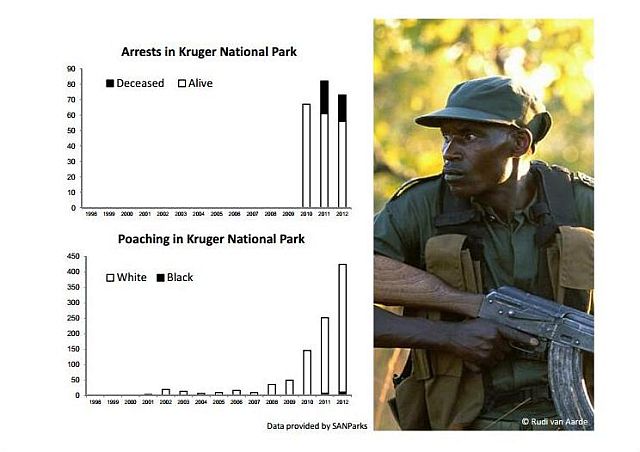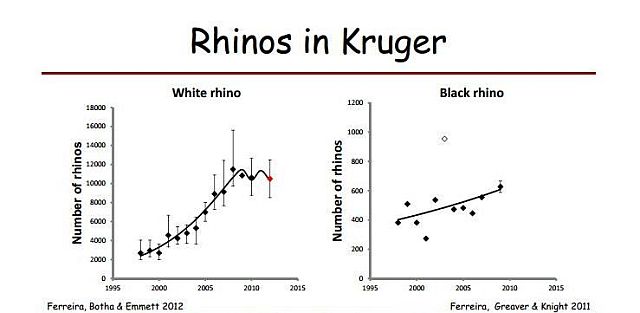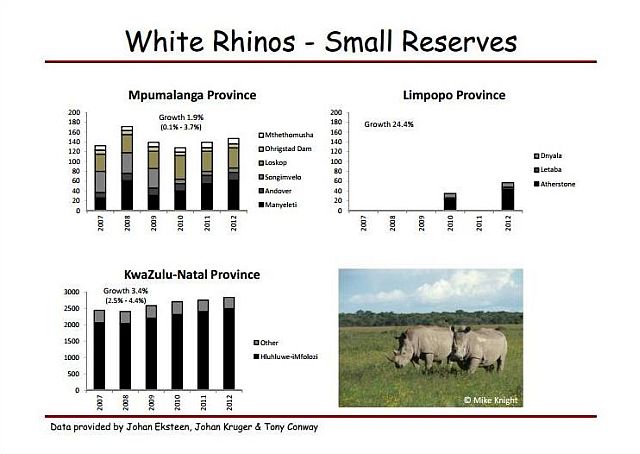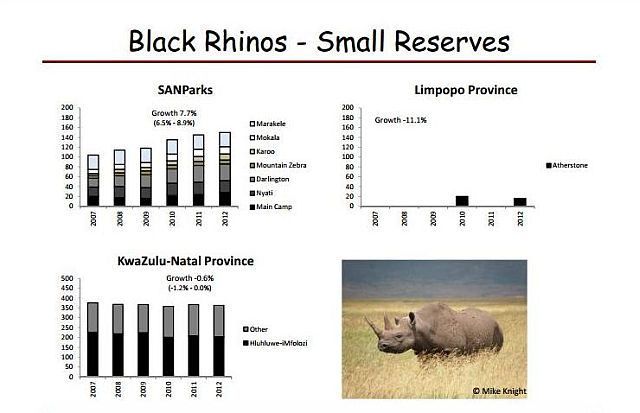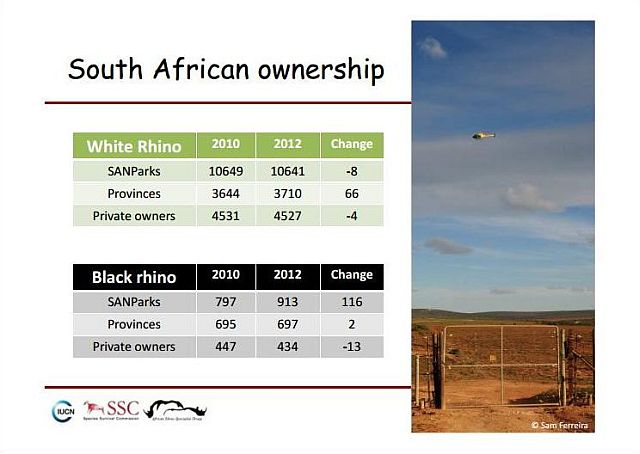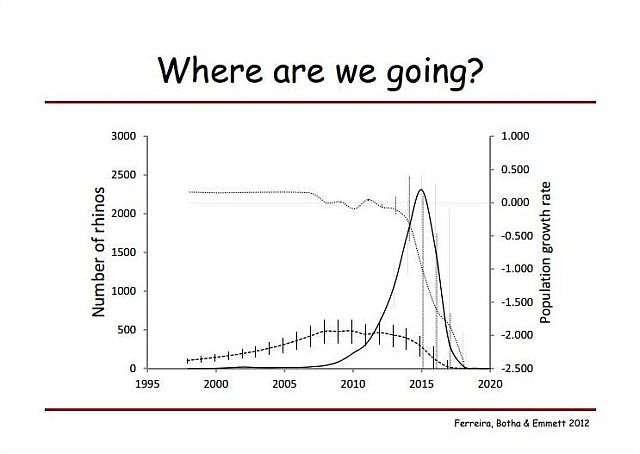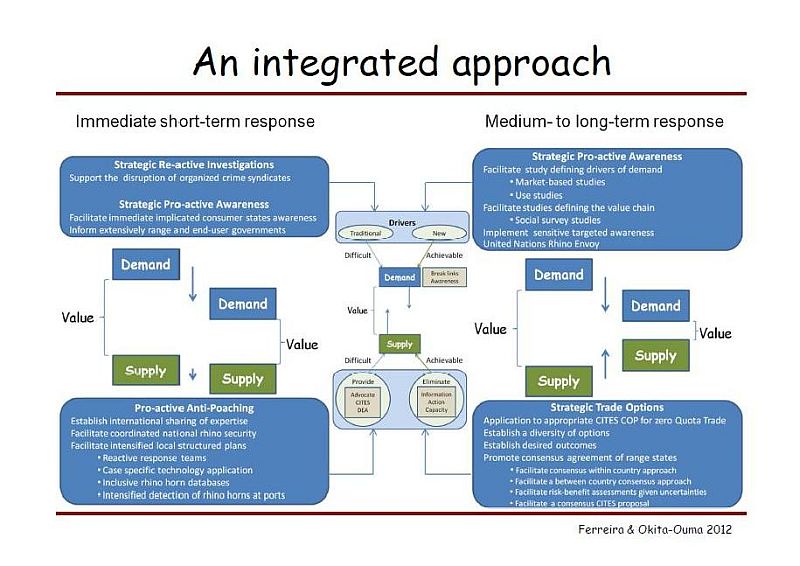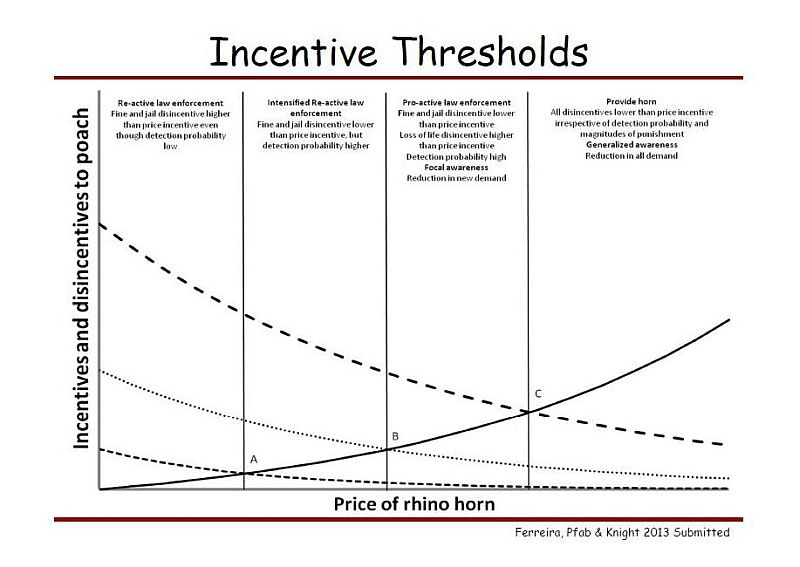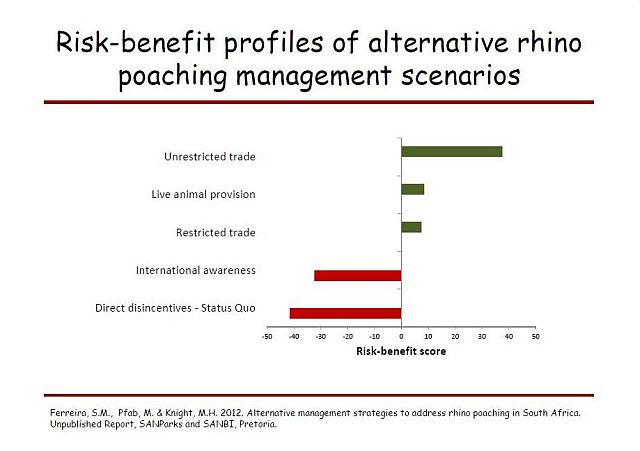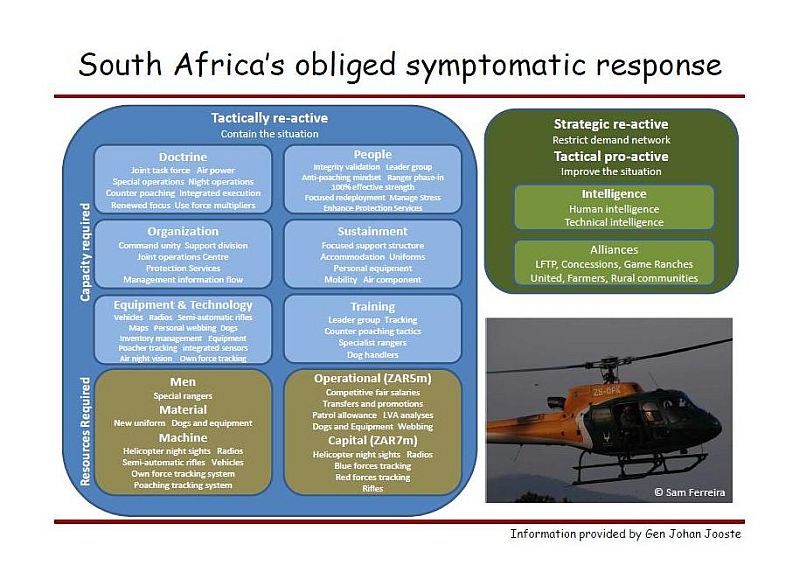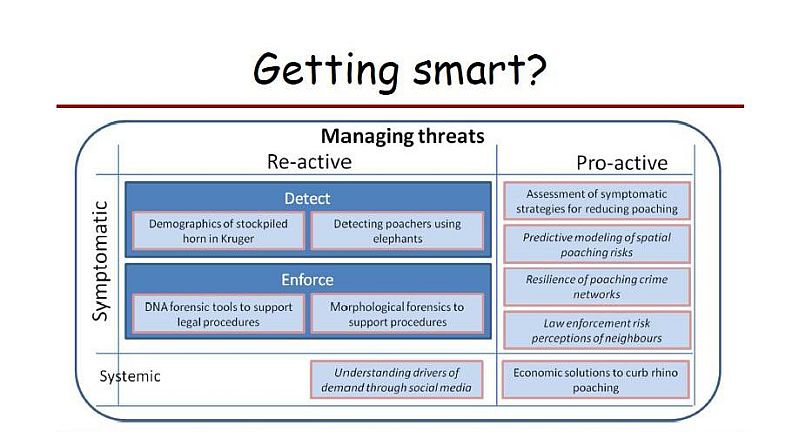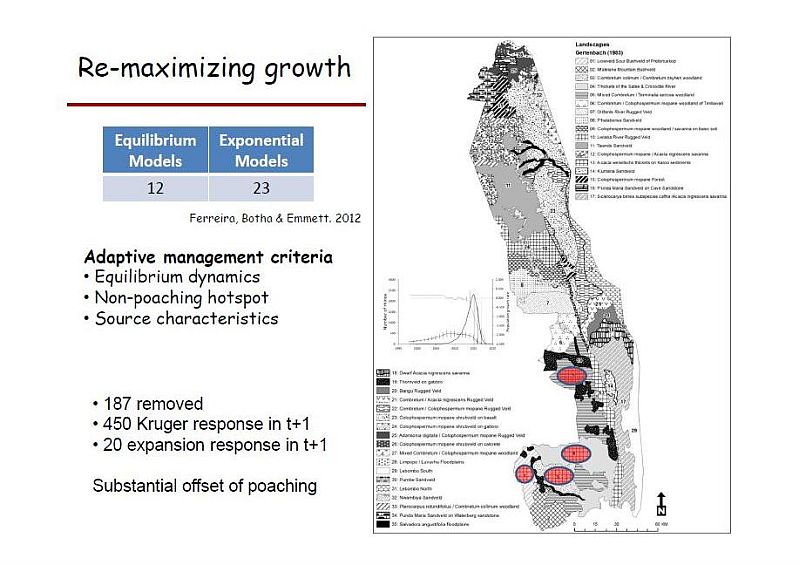Sixteenth meeting of the Conference of the Parties Bangkok (Thailand), 3-14 March 2013
Interesting agenda and working documents
Species trade and conservation
52. Leopard quotas (Botswana, South Africa and United States of America) CoP16 Doc. 52 (Rev. 1)
53. Elephants
53.1 Monitoring the Illegal Killing of Elephants CoP16 Doc. 53.1
53.2 Monitoring of illegal trade in ivory and other elephant specimens
53.2.1 Report of the Secretariat CoP16 Doc. 53.2.1
53.2.2 Report of TRAFFIC CoP16 Doc. 53.2.2
53.3 Proposed new resolution concerning the African Elephant Action Plan and African Elephant Fund (Nigeria and Rwanda) CoP16 Doc. 53.3 (Rev. 1)
54. Rhinoceroses
54.1 Report of the Working Group CoP16 Doc. 54.1 (Rev. 1)
54.2 Report of the Secretariat CoP16 Doc. 54.2 (Rev. 1)
Amendment of the Appendices
73. Proposed revision of Resolution Conf. 10.9 on Consideration of proposals for the transfer of African elephant populations from Appendix I to Appendix II (Côte d'Ivoire, Liberia and Sierra Leone) CoP16 Doc. 73 (Rev. 1)
77. Proposals to amend Appendices I and II CoP16 Doc. 77
White rhinoceros Kenya CoP16 Prop. 10
African elephant Tanzania CoP16 Prop. 11
African elephant Burkina Faso and Kenya CoP16 Prop. 12
Link to CITES CoP
Wildlife Trade - CITES Issues
Re: CITES CoP16 (March 2013)
Kenya puts squeeze on SA over rhino trophies
February 21 2013 at 03:30pm
By Tony Carnie
Durban - South Africa is to come under further international pressure from Kenya next month to clean up the rhino-hunting industry and to ban any rhino horn trophies from leaving its shores for at least five years.
The proposal from the Kenyan government is to be debated in Bangkok, Thailand, at the 16th meeting of the Convention on International Trade in Endangered Species (Cites), which begins on March 3.
Although the Kenyan proposal does not call for an outright ban on legal rhino hunts in South Africa, it has called for a zero export quota on any rhino hunting trophies until at least 2018.
But the ban seems unlikely to succeed, as the Cites secretariat has recommended that Kenya’s proposal should not be adopted.
In its proposal posted on the Cites website, Kenya said it did not intend to jeopardise the hunting industry in South Africa, but seemed to acknowledge that the five-year export ban would reduce the incentive for private owners to keep rhinos on their land.
“Kenya is of the firm opinion that the export of white rhino hunting trophies should not be allowed. Evidence suggests that hunting trophies offers a legal pathway for criminal networks to obtain rhino horn which is then illegally sold for ‘medicinal’ and ornamental purposes, and the continued legal trophy hunting of rhino may be stimulating demand.”
Kenya also acknowledged that South Africa had made several efforts to shut down “pseudo-hunts” of rhinos by Vietnamese citizens and nationals of other countries not traditionally associated with trophy hunting.
However, when Vietnamese nationals were banned from hunting rhinos in South Africa last year, criminal networks appeared to have shifted tactics by employing pseudo hunters from the Czech Republic, Poland and Russia to take the place of the Vietnamese.
According to Kenyan officials, the number of rhino hunting applications from Americans soared by about 300 percent last year from that in 2010, “possibly indicating the flexibility and opportunistic nature of pseudo-hunting criminal operatives”.
Despite South Africa’s recent actions, not all the trophy-hunting loopholes had been plugged.
“Kenya is convinced that by preventing legal trophy exports, pseudo-hunting will be eliminated and infiltration of legal horn into the illegal markets will be brought to an end.”
However, the Cites secretariat has recommended that member states should reject the Kenyan proposal when it is put to the vote by 177 Cites members in Bangkok next month.
The secretariat said that the Kenyan proposal would discourage the private sector from conserving rhinos on their land, and recognised that South Africa had taken “significant steps” to manage rhino hunting.
The Private Rhino Owners’ Association has also voiced strong opposition to the Kenyan proposal. In an open letter to the EU and other Cites member states late last year, association chairman Pelham Jones said Kenya’s plan would “devastate” the private rhino industry in South Africa.
“There are more rhinos on private land in South Africa than across the entire remainder of the African continent, and this fact bears testimony to the conservation success achieved in South Africa since the 1960s when there were only a few hundred rhino left in the country.”
Jones noted that until recently, private land owners had been investing in rhinos as an appreciating financial asset, and this had contributed to the proliferation of the species.
“The road to hell is unfortunately paved with good intentions and at present we are watching the rhino populations in our country being condemned to extinction because of such misguided and naive good intentions… We appeal to Cites member states to resist the urge to regress to a clampdown knee-jerk reaction and to carefully consider the hard-fought successes of South African conservation history.” - The Mercury
February 21 2013 at 03:30pm
By Tony Carnie
Durban - South Africa is to come under further international pressure from Kenya next month to clean up the rhino-hunting industry and to ban any rhino horn trophies from leaving its shores for at least five years.
The proposal from the Kenyan government is to be debated in Bangkok, Thailand, at the 16th meeting of the Convention on International Trade in Endangered Species (Cites), which begins on March 3.
Although the Kenyan proposal does not call for an outright ban on legal rhino hunts in South Africa, it has called for a zero export quota on any rhino hunting trophies until at least 2018.
But the ban seems unlikely to succeed, as the Cites secretariat has recommended that Kenya’s proposal should not be adopted.
In its proposal posted on the Cites website, Kenya said it did not intend to jeopardise the hunting industry in South Africa, but seemed to acknowledge that the five-year export ban would reduce the incentive for private owners to keep rhinos on their land.
“Kenya is of the firm opinion that the export of white rhino hunting trophies should not be allowed. Evidence suggests that hunting trophies offers a legal pathway for criminal networks to obtain rhino horn which is then illegally sold for ‘medicinal’ and ornamental purposes, and the continued legal trophy hunting of rhino may be stimulating demand.”
Kenya also acknowledged that South Africa had made several efforts to shut down “pseudo-hunts” of rhinos by Vietnamese citizens and nationals of other countries not traditionally associated with trophy hunting.
However, when Vietnamese nationals were banned from hunting rhinos in South Africa last year, criminal networks appeared to have shifted tactics by employing pseudo hunters from the Czech Republic, Poland and Russia to take the place of the Vietnamese.
According to Kenyan officials, the number of rhino hunting applications from Americans soared by about 300 percent last year from that in 2010, “possibly indicating the flexibility and opportunistic nature of pseudo-hunting criminal operatives”.
Despite South Africa’s recent actions, not all the trophy-hunting loopholes had been plugged.
“Kenya is convinced that by preventing legal trophy exports, pseudo-hunting will be eliminated and infiltration of legal horn into the illegal markets will be brought to an end.”
However, the Cites secretariat has recommended that member states should reject the Kenyan proposal when it is put to the vote by 177 Cites members in Bangkok next month.
The secretariat said that the Kenyan proposal would discourage the private sector from conserving rhinos on their land, and recognised that South Africa had taken “significant steps” to manage rhino hunting.
The Private Rhino Owners’ Association has also voiced strong opposition to the Kenyan proposal. In an open letter to the EU and other Cites member states late last year, association chairman Pelham Jones said Kenya’s plan would “devastate” the private rhino industry in South Africa.
“There are more rhinos on private land in South Africa than across the entire remainder of the African continent, and this fact bears testimony to the conservation success achieved in South Africa since the 1960s when there were only a few hundred rhino left in the country.”
Jones noted that until recently, private land owners had been investing in rhinos as an appreciating financial asset, and this had contributed to the proliferation of the species.
“The road to hell is unfortunately paved with good intentions and at present we are watching the rhino populations in our country being condemned to extinction because of such misguided and naive good intentions… We appeal to Cites member states to resist the urge to regress to a clampdown knee-jerk reaction and to carefully consider the hard-fought successes of South African conservation history.” - The Mercury
- Richprins
- Committee Member
- Posts: 75969
- Joined: Sat May 19, 2012 3:52 pm
- Location: NELSPRUIT
- Contact:
Re: CITES CoP16 (March 2013)
Ja...the trophies make up a tiny part of the slaughter, and of this part many go to Western detinations as just that..trophies!
CITES have got this absolutely right, I think!
CITES have got this absolutely right, I think!
Please check Needs Attention pre-booking: https://africawild-forum.com/viewtopic.php?f=322&t=596
Re: CITES CoP16 (March 2013)
South Africa participates in CITES Cop16
South Africa participates in CITES Cop16
Start: 2013-03-03 00:00
End: 2013-03-15 00:00
Timezone: Africa/Johannesburg
Introduction and background
The Convention on International Trade in Endangered Species of Wild Fauna and Flora (CITES) aims to ensure that international trade in listed species of wild animals and plants does not threaten their survival in the wild. The Conference of Parties meets every three years to consider amendments to the Appendices; to make recommendations to improve the effectiveness of the Convention; and to assess the implementation of the Convention. More than 70 proposals to amend the Appendices will be considered at the 16th meeting of the Conference of Parties and more than 70 working documents relating to strategic matters, implementation and enforcement matters will be discussed.
South Africa’s position
South Africa’s position will be informed by, and based on, sustainable use principles with the long term conservation of species as the overall objective. Proposals that will ensure responsible utilization and conservation of the species concerned will be supported by South Africa.
Important proposals to be considered by the CoP
Important proposals to be considered by the CoP include, among other proposals:
To list certain shark species in the Appendices of the Convention (Oceanic whitetip shark, Hammerhead sharks and Porbeagle shark);
A proposal by Kenya to place a zero export quota on the export of hunting trophies from South Africa and Swaziland, that will be opposed by both South Africa and Swaziland; and
A proposed amendment to the annotation to the African elephant listing to place restrictions on the submission of proposals to trade in ivory by African elephant range States.
Since all these proposals will be subject to negotiations during the CoP, South Africa’s positions relating to these cannot be made available at this point in time.
Side events during the CoP
South Africa will host and participate in side events during the CoP and three of these events will focus on rhino matters, i.e. rhino conservation, rhino safety and security and rhino economics or trade matters. This mirror the key thematic areas addressed during the national consultation process or Rhino Issues management (RIM) process. South Africa will also participate in the CITES and Livelihoods side event that will reflect on the role international trade plays in terms of livelihoods of communities and the challenges and opportunities that it presents
South Africa participates in CITES Cop16
Start: 2013-03-03 00:00
End: 2013-03-15 00:00
Timezone: Africa/Johannesburg
Introduction and background
The Convention on International Trade in Endangered Species of Wild Fauna and Flora (CITES) aims to ensure that international trade in listed species of wild animals and plants does not threaten their survival in the wild. The Conference of Parties meets every three years to consider amendments to the Appendices; to make recommendations to improve the effectiveness of the Convention; and to assess the implementation of the Convention. More than 70 proposals to amend the Appendices will be considered at the 16th meeting of the Conference of Parties and more than 70 working documents relating to strategic matters, implementation and enforcement matters will be discussed.
South Africa’s position
South Africa’s position will be informed by, and based on, sustainable use principles with the long term conservation of species as the overall objective. Proposals that will ensure responsible utilization and conservation of the species concerned will be supported by South Africa.
Important proposals to be considered by the CoP
Important proposals to be considered by the CoP include, among other proposals:
To list certain shark species in the Appendices of the Convention (Oceanic whitetip shark, Hammerhead sharks and Porbeagle shark);
A proposal by Kenya to place a zero export quota on the export of hunting trophies from South Africa and Swaziland, that will be opposed by both South Africa and Swaziland; and
A proposed amendment to the annotation to the African elephant listing to place restrictions on the submission of proposals to trade in ivory by African elephant range States.
Since all these proposals will be subject to negotiations during the CoP, South Africa’s positions relating to these cannot be made available at this point in time.
Side events during the CoP
South Africa will host and participate in side events during the CoP and three of these events will focus on rhino matters, i.e. rhino conservation, rhino safety and security and rhino economics or trade matters. This mirror the key thematic areas addressed during the national consultation process or Rhino Issues management (RIM) process. South Africa will also participate in the CITES and Livelihoods side event that will reflect on the role international trade plays in terms of livelihoods of communities and the challenges and opportunities that it presents
Re: CITES CoP16 (March 2013)
Media statement: Minister Edna Molewa’s statement at the 16th Conference of Parties of the Convention in International Trade in Endangered Species of Fauna and Flora (Cites) in Bangkok
5 March 2013
The 16th Conference of Parties of the Convention on the International Trade in Endangered Species of Wild Fauna and Flora (CITES) started its work with the hosting of a Ministerial Roundtable on the combating of transnational organised wildlife and organised crime yesterday, 4 March 2013.
The triennial gathering of 178 countries, officially opened on Sunday in Bangkok marking the 40th anniversary of CITES. It will, in the next two weeks, decide how to improve the world’s wildlife trade regime, seek to take stock of progress made in ensuring survival of threatened species, and also decide on which species can be down-listed or up-listed on CITES lists, depending on their conservation status as a result of trade.
The more than 2 000 delegates represent their countries as signatories to this international agreement between, and among, governments. On the table are 70 proposals, including the amendment of Rules of Procedure for decision-making. Amongst the tabled proposals are those that include up-listing of the rhino due to poaching, from which key range States have suffered, including South Africa. This would have widespread implications for South Africa’s white rhino population including the creation of disincentives for the private sector.
“The 40th anniversary of CITES is a critical year for the world's wildlife,” said John Scanlon, CITES Secretary-General. He added that this Bangkok conference is expected to be of “great significance to the future of many species of plants and animals”.
The UN Under-Secretary General and Executive Director UN Environment Programme (UNEP), Achim Steiner said that as over-exploitation of the world's critical natural resource base continues on an unsustainable path, species are being placed under increased pressure.
Steiner also said that alongside many other international agreements, CITES provides a wealth of examples where countries are seizing opportunities to bring about positive environmental change with significant social and economic outcomes.
South Africa, which has a proud and long successful conservation record, and is a founding member of CITES. Central to South Africa’s conservation model, is an undisputed record of having brought species populations to healthy recovery. Among these are the white and black rhino, which had come close to extinction almost a century ago.
South Africa’s message to CITES is supported by the government’s policy of sustainable utilisation of natural resources as a biodiversity conservation tool. It is because of adaptive management and sustainable utilisation that South Africa has had such a good conservation track record. Currently, South Africa’s retention of its position as the last bastion of the rhino, hosting more than 80% of the world’s rhino population, serves as best practice in the world – despite increased poaching.
Water and Environmental Affairs Minister, Ms Edna Molewa, met with representatives of the Chinese and Vietnamese delegations on Sunday, March 3, 2013 on the margins of CITES to discuss issues of mutual cooperation in the field of biodiversity, particularly the continued illegal trade in rhino horn.
The Minister’s discussions at COP16 on Sunday with China and Vietnam confirmed the two countries willingness to continue to cooperate with South Africa in the areas of law enforcement in relation to illegal trade in wildlife species, and all parties recommitted their resolve to ensure that a discussion on restricted trade could be considered, during one of the next coming CITES CoPs, in compliance with stringent CITES requirements.
The talks with Vietnam established that the implementation plan stemming from the Memorandum of Understanding relating to Biodiversity conservation, signed between the two countries in December 2012, will be signed and rolled out when a high level Vietnamese delegation visits South Africa in April 2013.
Discussions with China had centred on the finalisation of a Memorandum of Understanding, to be signed in April this year. This memorandum on Biodiversity Conservation also deal with illegal rhino hunting and will also be soon followed by an implementation plan, similar to that concluded with Vietnam.
It was also agreed that China and South Africa will ensure the immediate roll-out of technological innovation to continue the fight against wildlife crimes. The matter will also be further discussed within the Brazil, Russia, China and South Africa (BRICS) member countries at bilateral and multilateral levels.
Addressing the Roundtable on the Combating of Transnational Organised Wildlife and Forest Crime, the Minister said the establishment of cross-border conservation areas, through the transfrontier parks in Southern Africa has not always been easy to manage, as the region is faced with an increase in wildlife crime.
One of the key issues facing the region is the need to harmonise and align policy, and cross-border enforcement and operations, fight poverty which is a factor which contributes to easy recruitment of poor communities as poachers. In addition, other measures must expedite wildlife conservation awareness creation and equally important is a need for more community-based enterprise development from the wildlife sector.
The Minister said the meeting has recognized that no single country could work on its own to combat wildlife crime, and that greater cooperation with non-governmental organisations and community-based structures is needed, as well as the use of improved technology.
For media inquiries contact:
Roopa Singh
Email: rsingh@environment.gov.za /
Cell: 082 225 3076
or
Eleanor Momberg
Email: emomberg@environment.gov.za /
Cell: 083 400 5741
5 March 2013
The 16th Conference of Parties of the Convention on the International Trade in Endangered Species of Wild Fauna and Flora (CITES) started its work with the hosting of a Ministerial Roundtable on the combating of transnational organised wildlife and organised crime yesterday, 4 March 2013.
The triennial gathering of 178 countries, officially opened on Sunday in Bangkok marking the 40th anniversary of CITES. It will, in the next two weeks, decide how to improve the world’s wildlife trade regime, seek to take stock of progress made in ensuring survival of threatened species, and also decide on which species can be down-listed or up-listed on CITES lists, depending on their conservation status as a result of trade.
The more than 2 000 delegates represent their countries as signatories to this international agreement between, and among, governments. On the table are 70 proposals, including the amendment of Rules of Procedure for decision-making. Amongst the tabled proposals are those that include up-listing of the rhino due to poaching, from which key range States have suffered, including South Africa. This would have widespread implications for South Africa’s white rhino population including the creation of disincentives for the private sector.
“The 40th anniversary of CITES is a critical year for the world's wildlife,” said John Scanlon, CITES Secretary-General. He added that this Bangkok conference is expected to be of “great significance to the future of many species of plants and animals”.
The UN Under-Secretary General and Executive Director UN Environment Programme (UNEP), Achim Steiner said that as over-exploitation of the world's critical natural resource base continues on an unsustainable path, species are being placed under increased pressure.
Steiner also said that alongside many other international agreements, CITES provides a wealth of examples where countries are seizing opportunities to bring about positive environmental change with significant social and economic outcomes.
South Africa, which has a proud and long successful conservation record, and is a founding member of CITES. Central to South Africa’s conservation model, is an undisputed record of having brought species populations to healthy recovery. Among these are the white and black rhino, which had come close to extinction almost a century ago.
South Africa’s message to CITES is supported by the government’s policy of sustainable utilisation of natural resources as a biodiversity conservation tool. It is because of adaptive management and sustainable utilisation that South Africa has had such a good conservation track record. Currently, South Africa’s retention of its position as the last bastion of the rhino, hosting more than 80% of the world’s rhino population, serves as best practice in the world – despite increased poaching.
Water and Environmental Affairs Minister, Ms Edna Molewa, met with representatives of the Chinese and Vietnamese delegations on Sunday, March 3, 2013 on the margins of CITES to discuss issues of mutual cooperation in the field of biodiversity, particularly the continued illegal trade in rhino horn.
The Minister’s discussions at COP16 on Sunday with China and Vietnam confirmed the two countries willingness to continue to cooperate with South Africa in the areas of law enforcement in relation to illegal trade in wildlife species, and all parties recommitted their resolve to ensure that a discussion on restricted trade could be considered, during one of the next coming CITES CoPs, in compliance with stringent CITES requirements.
The talks with Vietnam established that the implementation plan stemming from the Memorandum of Understanding relating to Biodiversity conservation, signed between the two countries in December 2012, will be signed and rolled out when a high level Vietnamese delegation visits South Africa in April 2013.
Discussions with China had centred on the finalisation of a Memorandum of Understanding, to be signed in April this year. This memorandum on Biodiversity Conservation also deal with illegal rhino hunting and will also be soon followed by an implementation plan, similar to that concluded with Vietnam.
It was also agreed that China and South Africa will ensure the immediate roll-out of technological innovation to continue the fight against wildlife crimes. The matter will also be further discussed within the Brazil, Russia, China and South Africa (BRICS) member countries at bilateral and multilateral levels.
Addressing the Roundtable on the Combating of Transnational Organised Wildlife and Forest Crime, the Minister said the establishment of cross-border conservation areas, through the transfrontier parks in Southern Africa has not always been easy to manage, as the region is faced with an increase in wildlife crime.
One of the key issues facing the region is the need to harmonise and align policy, and cross-border enforcement and operations, fight poverty which is a factor which contributes to easy recruitment of poor communities as poachers. In addition, other measures must expedite wildlife conservation awareness creation and equally important is a need for more community-based enterprise development from the wildlife sector.
The Minister said the meeting has recognized that no single country could work on its own to combat wildlife crime, and that greater cooperation with non-governmental organisations and community-based structures is needed, as well as the use of improved technology.
For media inquiries contact:
Roopa Singh
Email: rsingh@environment.gov.za /
Cell: 082 225 3076
or
Eleanor Momberg
Email: emomberg@environment.gov.za /
Cell: 083 400 5741
Re: CITES CoP16 (March 2013)
Minister Molewa addresses the International Consortium on the Combating of Transnational Organised Wildlife and Forest Crime (ICCWC), during a roundtable on the rhino situation and measures to thwart poaching in South Africa
CITES CoP 16, Bangkok, Thailand, 04 March 2013
The history of conservation and development in the Southern Africa cannot be detached from the revolution history of the region. Some of the so called National Parks in our sub-region today were areas of war conflict.
South Africa is involved in 6 trans-frontier conservation areas that involve 10 countries. The objective of establishing these cross-border conservation areas are multifaceted and they seek to achieve conservation, ecotourism, peace, harmony and stability. Unfortunately, this has not always been easy as we are faced with an up-scourge of wildlife crime in the region.
One of the key issues facing the region is that we need to deal with, for example is policy harmonisation and alignment, cross border enforcement and
CITES CoP 16, Bangkok, Thailand, 04 March 2013
The history of conservation and development in the Southern Africa cannot be detached from the revolution history of the region. Some of the so called National Parks in our sub-region today were areas of war conflict.
South Africa is involved in 6 trans-frontier conservation areas that involve 10 countries. The objective of establishing these cross-border conservation areas are multifaceted and they seek to achieve conservation, ecotourism, peace, harmony and stability. Unfortunately, this has not always been easy as we are faced with an up-scourge of wildlife crime in the region.
One of the key issues facing the region is that we need to deal with, for example is policy harmonisation and alignment, cross border enforcement and



